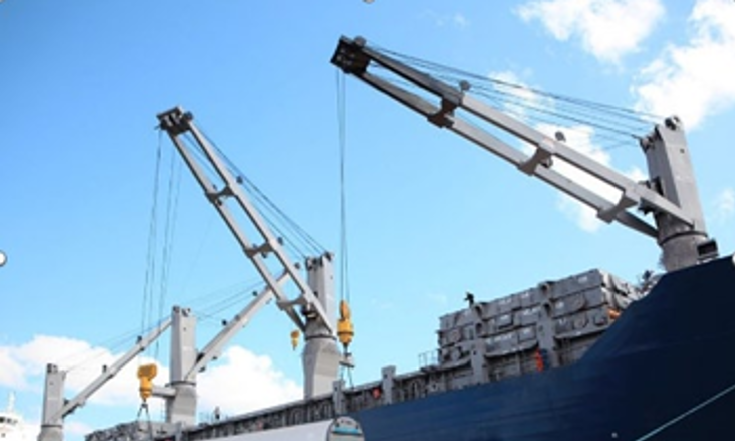USCG: wire rope hazard management – dropped turbine nacelle
The United States Coastguard (USCG) has published Marine Safety Alert 11-23 relating to an incident in which a wire rope parted, causing a wind turbine nacelle weighing 69 tons to fall 2.2m to deck, causing significant damage and loss of the nacelle.
What happened
A vessel crane was being used to offload the 69 ton wind turbine nacelle. While hoisting, a wire rope parted, causing the load to fall to the deck. No-one was harmed, but the load landed within a metre of working personnel – there was high potential for serious injury. There was significant damage to the vessel and total loss of the cargo.
What went wrong
The USCG noted that investigation revealed that corrosion, wear, and monotonic ductile overload of the wire rope caused the failure. Further, it was concluded the wire rope was still within its permitted service life but should have been replaced prior to the incident due to the corrosion and wear.
The USCG notes that given the potential wear associated with harsh operating environments, it is imperative that vessel operators employ robust inspection and testing to ensure equipment suitability through its lifespan.

Recommendations
The US Coast Guard strongly recommends that vessels equipped with shipboard cranes:
- Implement increased load testing frequency to verify wire rope integrity between class society mandated 5-year load tests;
- Are provided with and utilize pressure lubricating devices as recommended by the manufacturer for routine maintenance;
- Ensure maintenance tracking systems align with manufacturer’s recommended maintenance protocol, including the period of employment and renewal of wire ropes;
- Consider shortened periods of employment and early renewal of crane wire ropes to prevent corrosion and fatigue induced failures;
- Instruct and train all personnel to never position themselves under cargo suspended by any crane, even temporarily;
- Ensure all shipboard crane operators are properly trained and cognizant of industry best practices;
- Implement increased wire rope visual inspection frequency;
- Degrease and remove all lubricant prior to crane wire rope visual inspections to ensure surface defects are not concealed.
Members may wish to refer to:
- IMCA HSSE 022 LR 001 M 194 Recommended practice on wire rope integrity management for vessels in the offshore industry
- IMCA HSSE019 LR006 M187 D060 Guidelines for lifting operations
Safety Event
Published: 19 February 2024
Download: IMCA SF 04/24
IMCA Safety Flashes
Submit a Report
IMCA Safety Flashes summarise key safety matters and incidents, allowing lessons to be more easily learnt for the benefit of all. The effectiveness of the IMCA Safety Flash system depends on Members sharing information and so avoiding repeat incidents. Please consider adding [email protected] to your internal distribution list for safety alerts or manually submitting information on incidents you consider may be relevant. All information is anonymised or sanitised, as appropriate.
IMCA’s store terms and conditions (https://www.imca-int.com/legal-notices/terms/) apply to all downloads from IMCA’s website, including this document.
IMCA makes every effort to ensure the accuracy and reliability of the data contained in the documents it publishes, but IMCA shall not be liable for any guidance and/or recommendation and/or statement herein contained. The information contained in this document does not fulfil or replace any individual’s or Member's legal, regulatory or other duties or obligations in respect of their operations. Individuals and Members remain solely responsible for the safe, lawful and proper conduct of their operations.
